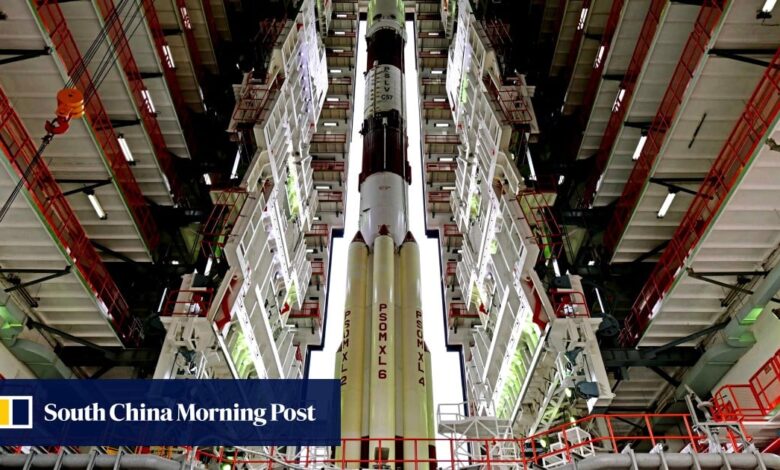Aditya-L1 mission: India seeks to top its moon landing with spacecraft to study sun

[ad_1]
Hot on the heels of its lunar landing success, India is readying to blast a probe even deeper into space to study the sun.
The country’s first solar observation mission, named Aditya-L1, is set to be launched from India’s main spaceport on Sriharikota, an island off the southern state of Andhra Pradesh, at 11.50am local time on Saturday.
The spacecraft is scheduled to spend 125 days travelling 1.5 million km (932,000 miles) to its destination, a point in space where objects stay put and consume less fuel.
While arriving there would be an impressive achievement for ISRO, the Indian space agency, Aditya-L1 would have gone just a fraction of the 150 million km between Earth and the sun.
For ISRO, success would be another major feat after India became the first country to land a spacecraft close to the lunar south pole in August.
India has more ambitious projects in the works. A human space flight programme aims to launch astronauts into orbit for the first time possibly by 2025, ISRO Chairman S Somanath said in an interview with news agency Asian News International.
Another first for India on moon’s south pole as sulphur presence confirmed
Another first for India on moon’s south pole as sulphur presence confirmed
ISRO and Nasa plan to cooperate on sending astronauts to the International Space Station and India is in discussions with Japan to work together on a mission.
Prime Minister Narendra Modi has said ISRO will also launch an uncrewed Venus mission.
If all goes according to plan, Aditya-L1 will enter into a halo orbit around one of five Lagrange points, areas known as parking spots in space because probes can orbit them in a constant pattern while conserving fuel.
From there, Aditya-L1 should enjoy an uninterrupted view of the sun and study in real time its effect on environmental conditions in the vicinity of Earth and other planets.
That would make India one of a small group of countries with probes studying the sun.
China has two such spacecraft orbiting Earth, including the Advanced Space-based Solar Observatory launched last year to investigate solar flares and coronal mass ejections.
Hinode, backed by space agencies from Japan, the UK, the US and Europe, is orbiting Earth and measures the magnetic fields of the sun.
The Solar & Heliospheric Observatory mission (SOHO), a joint project of Nasa and the European Space Agency, is near the same Lagrange point as the one ISRO is targeting for Aditya-L1.
Another joint US-European mission, Solar Orbiter, can travel as close as about 42 million km from the sun.
The US has other solar missions, including the Parker Solar Probe, which in 2021 became the first spacecraft to pass through the sun’s corona, or upper atmosphere.
[ad_2]
Source link






